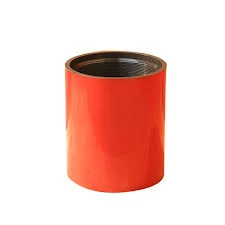- Afrikaans
- Albanian
- Amharic
- Arabic
- Armenian
- Azerbaijani
- Basque
- Belarusian
- Bengali
- Bosnian
- Bulgarian
- Catalan
- Cebuano
- Corsican
- Croatian
- Czech
- Danish
- Dutch
- English
- Esperanto
- Estonian
- Finnish
- French
- Frisian
- Galician
- Georgian
- German
- Greek
- Gujarati
- Haitian Creole
- hausa
- hawaiian
- Hebrew
- Hindi
- Miao
- Hungarian
- Icelandic
- igbo
- Indonesian
- irish
- Italian
- Japanese
- Javanese
- Kannada
- kazakh
- Khmer
- Rwandese
- Korean
- Kurdish
- Kyrgyz
- Lao
- Latin
- Latvian
- Lithuanian
- Luxembourgish
- Macedonian
- Malgashi
- Malay
- Malayalam
- Maltese
- Maori
- Marathi
- Mongolian
- Myanmar
- Nepali
- Norwegian
- Norwegian
- Occitan
- Pashto
- Persian
- Polish
- Portuguese
- Punjabi
- Romanian
- Russian
- Samoan
- Scottish Gaelic
- Serbian
- Sesotho
- Shona
- Sindhi
- Sinhala
- Slovak
- Slovenian
- Somali
- Spanish
- Sundanese
- Swahili
- Swedish
- Tagalog
- Tajik
- Tamil
- Tatar
- Telugu
- Thai
- Turkish
- Turkmen
- Ukrainian
- Urdu
- Uighur
- Uzbek
- Vietnamese
- Welsh
- Bantu
- Yiddish
- Yoruba
- Zulu
steel couplings for pipe
Steel Couplings for Pipe Essential Components for Reliable Piping Systems
In modern industrial applications, the integrity and reliability of piping systems are crucial for the safe and efficient transportation of fluids and gases. Among the various components that play a vital role in maintaining the structural integrity of these systems, steel couplings hold a prominent position. Typically used to connect two segments of pipes, these fittings offer numerous advantages that contribute significantly to the overall performance of piping networks.
What are Steel Couplings?
Steel couplings are mechanical devices designed to join two lengths of pipe together end-to-end. They are fabricated from high-grade steel, which provides superior strength and durability compared to couplings made from other materials like plastic or aluminum. The primary function of these couplings is to ensure a leak-proof connection between pipes, allowing for the safely contained transport of liquids, gases, or slurries.
Types of Steel Couplings
There are several types of steel couplings available, each suited for specific applications and environments
1. Coupling for Rigid Pipes These are used for piping systems where rigidity is essential, typically in construction or heavy industrial settings. They often feature threaded ends for easy installation and disassembly.
2. Flexible Couplings Ideal for applications requiring some degree of movement or flexibility, these couplings accommodate thermal expansion and contraction of pipes. They are commonly used in plumbing and HVAC systems.
3. Slip Couplings These are designed to connect two lengths of pipe while allowing for adjustment in positioning. Slip couplings are particularly beneficial during installation when precise alignment is difficult.
4. Compression Couplings Utilizing a compression fitting, these couplings provide a tight seal without the need for welding or soldering. They are advantageous in scenarios where the pipe materials differ or when working in confined spaces.
Benefits of Steel Couplings
steel couplings for pipe

1. Durability Steel couplings are built to withstand high pressure and extreme temperatures, making them suitable for various applications, from residential plumbing to industrial oil and gas transport.
2. Corrosion Resistance Many steel couplings are galvanized or coated with anti-corrosive materials, enhancing their resistance to rust and deterioration, particularly in harsh environments.
3. Ease of Installation The design of steel couplings often allows for straightforward installation, whether through welding, threading, or sliding onto pipe ends. This ease of use reduces installation time and labor costs.
4. Leak Prevention The robust construction and tight sealing capabilities of steel couplings significantly minimize the risk of leaks, enhancing the safety and efficiency of the entire piping system.
5. Cost-Effectiveness Although the initial investment in steel couplings may be higher than alternatives, their longevity and reduced maintenance requirements often lead to cost savings in the long run.
Applications of Steel Couplings
Steel couplings are versatile and can be found in various applications, including
- Water Distribution Used in municipal water supply systems to ensure secure connections between pipes. - Oil and Gas Essential in the transportation of hydrocarbons, where integrity and safety are paramount. - Chemical Processing Employed in systems that transport corrosive substances, where durability is crucial. - HVAC Systems Utilized in heating, ventilation, and air conditioning systems for reliable connections between ducts and pipes.
Conclusion
In conclusion, steel couplings are indispensable components of efficient and reliable piping systems across numerous industries. Their strength, durability, and versatility make them the go-to choice for engineers and contractors when designing piping networks. Whether in residential, commercial, or industrial applications, the use of steel couplings significantly enhances the performance and longevity of piping systems. As technology advances, the importance of using high-quality and innovative coupling solutions will continue to grow, catering to the increasingly demanding environments of modern infrastructure.
-
Tubing Pup Joints: Essential Components for Oil and Gas OperationsNewsJul.10,2025
-
Pup Joints: Essential Components for Reliable Drilling OperationsNewsJul.10,2025
-
Pipe Couplings: Connecting Your World EfficientlyNewsJul.10,2025
-
Mastering Oilfield Operations with Quality Tubing and CasingNewsJul.10,2025
-
High-Quality Casing Couplings for Every NeedNewsJul.10,2025
-
Boost Your Drilling Efficiency with Premium Crossover Tools & Seating NipplesNewsJul.10,2025







